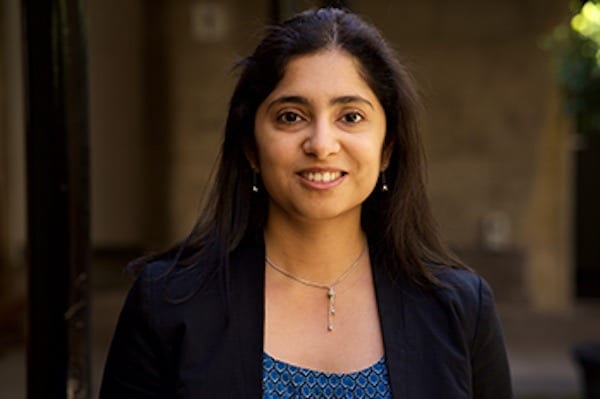For one, there’s our 2018 Australian of the Year, quantum physicist Professor Michelle Simmons. Her Australia Day Address back in January was incredibly inspiring for anyone pushing to have a big career — in science or not — and there are a couple of words in it I regularly recite when thinking about goals and other decisions: “do the hard things”.
Then there’s Dr Megan Clark, who was recently named head of the Australian Space Agency. She started her career as a geologist, at a time when it was illegal for women to work underground. “I just like the sense that you still feel like a kid, curious about how things work, that means your curiosity can run wild and that’s your job so how perfect is that,” she said on why she loves science.
Megan Clark leads the new Australian Space Agency. She’s previously led the CSIRO. She tells us what she loves about STEM in National Science Week… #scienceweek #mySTEMstory pic.twitter.com/ry6UemeOcq
— sciencegovau (@ScienceGovAu) August 13, 2018
And there is Dr Cathy Foley, a physicist who has this week been named the CSIRO’s chief scientist, a role that aims to champion the impact and contribution of science to the world. Foley is widely recognised for her work developing superconducting devices and systems that have helped to unearth more than $6 billion in minerals worldwide. She starts in the role in September, and says promoting women in science will be one of her key priorities.
“I’m looking forward to not just spreading the word, but helping shape the science agenda and raising the profile of the role of women in STEM.” Great to see #physicist Dr Cathy Foley appointed as CSIRO’s next Chief Scientist! #womeninSTEM https://t.co/fw3EtEuyMx pic.twitter.com/97yT760Tdk
— Innovation Sci Aust (@ISA_Board) August 14, 2018
Plus there’s Associate Professor Madhu Bhaskaran (pictured above) from RMIT University, who has already won multiple science prizes for her work developing a form of ‘electronic skin” that monitors the environment and human body. This week she picked up The ASPIRE Prize in Papua New Guinea, recognising innovation, research and education across the APEC region.
Also our 2017 Leadership Awards winner in the tech category, Dr Lucy Palmer. Lucy is the Laboratory head at Florey Institute of Neuroscience and Mental Health, leading a fast-growing laboratory focusing on understanding how the brain interprets our external world and what that means to our daily functioning.
And a special mention also for Angelina Arora, a high school student who has developed biodegradable plastic made from prawn shells.
High School student Angelina Arora has developed a new solution to the world’s growing plastic problem – a shrimp shell bioplastic that is completely biodegradable, breaking down in ~33 days! Wow. #IMPACT7#WomenInSTEMM PING @WomenSciAUST pic.twitter.com/MojOnn3wC7
— Emma Gallaher (@DrEmmaGallaher) August 9, 2018
The above are just a tiny portion of the many incredible women in science leadership right now, women who unfortunately are still vastly underrepresented in the field and continue to come up against stereotypes and assumptions about their work.
Just this week Dr Tasha Stanton shared on Twitter what she described as the “sad thing about being a female in research” — that she can’t take her husband to events without people assuming he is the reason she’s attending. She attended a recent event where she was referred to as the “less significant other”. Her response? “No, I am the invited speaker”.
Stanton regularly speaks and commentates on chronic pain and is researching the role of the brain in chronic pain at the University of South Australia.
Here’s the sad thing about being a female in research. I cannot take my husband to events without people assuming he is the reason we are attending. Today I was referred to as the “less significant” other.
No. I am the invited speaker. #womeninSTEMM
— Tasha Stanton (@Tash_Stanton) August 11, 2018
We were stunned by the number of women in science who entered our Leadership Awards last year, all doing incredible work across a wide range of areas. That’s why this year we wanted to separate the categories – with one for women in tech, and a second for women in health and science.
Nominations for the Women’s Agenda Leadership Awards close this week. Enter here.

